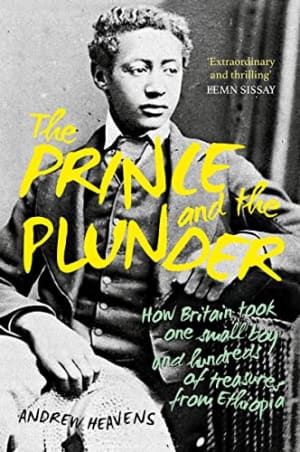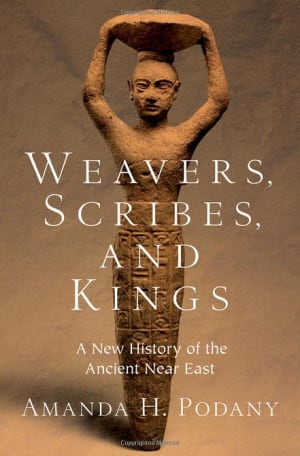They are quite willing to accept that there’s going to be a hostile environment, and weather, and native Americans, and all the things that threaten them. The one thing that they always forget is that they will hate each other.
Malcolm Gaskill on New England Puritans, RHLSTP Book Club 20 podcast
In Malcolm Gaskill’s excellent popular history book The Ruin of All Witches: Life and Death in the New World it is this flourishing hatred that provides the backdrop for the emergence of a witch.
The dislike itself is a product of the harsh, precarious, competitive and hugely stressful life in the early British North American settlements in the puritan colony of Massachusetts. In particular: the settlement of Springfield founded by the Essex gentleman William Pynchon on the Connecticut River, 100 miles due west of Boston.
A flighty temptress
Like the other towns established by British settlers1 the land where William Pynchon founded Springfield2 was an uninhabited wilderness that had been populated by native American peoples for thousands of years. As Gaskill puts it “Pynchon... persuaded the Agawam Indians, non-proprietorial hunter-gatherers, that they owned their land - so he could buy it... A deed was signed - the Indians adding shaky monograms of bows and arrows - leasing the English three parcels of lands, five miles long... in return, the chieftains each received a coat, a hatchet, a hoe, a knife and a fathom of wampum - the native currency of polished shells”
The main English settlement in the area, Boston, had only been founded in 1630 (about 5-6 years before Springfield) but was already flourishing - and full up. Starting from scratch in a new town was a way of getting hold of land but it was also a gamble, where the stake was your life.
The next great adventure
It was a price that was paid regularly. Winter meant blanketing snow for five freezing months with food stocks, fodder and fuel inexorably declining. When spring and the warm weather arrived disease swept through the small settlement - small children and babies were particularly vulnerable. Crops were devastated by plagues of black caterpillars and other insects. Indians were seen as a deadly threat. Even crossing the river to the farmland on the opposite bank could easily end in tragedy: because most of the colonists couldn’t swim, if your canoe tipped that was it. Gaskill reports on a canoeing incident when a man, his daughter and granddaughter all died when their canoe overturned as they were paddling across.
But losing your life wasn’t the only or even the main danger. Your soul was also on the line.
Dwelling in dreams
The New England colony was intensely religious and the colonists were highly conscious of their holy task to build a new Jerusalem, a city upon a hill. This spiritual mission was essential for survival, and naturally the devil would be delighted if they failed. As celebrity Puritan Minister John Winthrop put it to his fellow boaters on the first crossing to Boston:
...if our hearts shall turn away, so that we will not obey, but shall be seduced, and worship other Gods, our pleasure and profits, and serve them... we shall surely perish out of the good land whither we pass over this vast sea to possess it.
John Winthrop, 1630
Into this combustible mix of fervent religious paranoia and real existential threat come Mary and Hugh Parsons the main protagonists of The Ruin of all Witches.
Love leaves its own mark
The two meet in Springfield, and fall in love. Or at least fall sufficiently in love to get married. Mary had come to New England to work as a nanny and servant for the kids of William Pynchon, the town bigwig. Hugh had come along a bit later, knowing that his skills as a brickmaker would be in demand. Up until that point everything was built from wood, which was always in danger of burning down. Brick chimneys were a particularly sought after home improvement.
Unfortunately it doesn’t seem to take too long before Mary and Hugh decide they don’t like each other after all - in fact they detest each other. This is compounded by the tragedy of losing a child. Before long they are at each other's throats in public and bad mouthing each other in private.
Standing up to his friends
To make matters worse for them Hugh’s client relationship skills are woeful. Like everyone else in the colony he is keenly acquisitive and when he thinks he is not getting his dues on a brick deal, he furiously threatens his customers that “I will be even with you!”. As you might expect, they don’t like it and no doubt wish themselves rid of this turbulent brickmaker.
When things start to go wrong in ways that people can’t quite explain, suspicions of witchcraft attach themselves to this unhappy pair, suspicions which Mary - who appears increasingly mentally unwell - openly endorses when it comes to her hated and feared husband.
Mischief managed
The “evidence” of witchcraft in Springfield is a curious mix of the horrific - “he cursed my child to death” - and the banal - “my bewitched pudding split in half”. One episode that stuck in my mind was a neighbour’s complaint that Hugh had made his trowel disappear... only to reappear again a day later just where he had left it.
On the face of it this sounds ridiculous - marshalling all the diabolical powers of darkness to make John Lombard temporarily mislay his trowel? But a good analogy from nowadays might be the suspense created in a horror film. When the hero Will Smith finds zombies are repositioning mannikins to freak him out in the hit noughties zombie movie I am Legend, it is not that the mannikins themselves are scary (they are made of inanimate plastic) but the fact that the zombies are much smarter than he had thought - and they are deliberately messing with his mind.
The Prisoners of Agawam
When the weight of suspicion becomes overwhelming Hugh and Mary are formally arrested as witches by Pynchon and sent in chains for trial in Boston which is the backbone and culmination of this book.
Not a History of Magic
Although this book is about witches and witchcraft, the topic is used as a sort of crystal ball to peer into the past. It is not the witch that Gaskill is interested in, it is the person.
This means The Ruin of All Witches is much more a study of small town settler life than it is a witchfinder general’s handbook. You do get a few tips: look out for nipple like blemishes on the skin, spectral lights, claps of thunder when the suspect appears, and invisible black dogs. But mainly we are reading about the struggles and hardships of ordinary folk.
Gadding with ghouls
While rigorously factual Gaskill's style is almost novelistic - a bit like John Steinbeck but without the optimism. His description of Springfield when the settlers first saw the site is a good example:
the Connecticut valley was dotted with marshes and woods, marbled with streams and bounded by distant misty mountains. It was wondrous, yet terrifying in solitude.
Malcolm Gaskill, The Ruin of all Witches
He is great on the little details too: I enjoyed his description of the town store as a place where you could buy “dried fruit, sugar, condiments and spices, including cinnamon. The shop also sold purgative pills (‘vomits’) and other medicines, such as wormseed, ratsbane for killing vermin and gunpowder, which colonists mixed with butter for toothpaste”.
It is also a carefully structured work, each chapter carefully paced and ending with a cliffhanger.
Detraqteurs?
I found The Ruin if all Witches captivating and accessible. But a friend of mine who had read it earlier (sometime contributor to this website, Maddox Von Ranke) struggled with the slow pace, accusing the author of dragging the story out.
In some ways Maddox is right: despite the theme this is no Harry Potter. But the pace does feel in keeping with the slower rhythms of this overwhelmingly agricultural community, and allows us to experience first hand the slow building almost suffocating tensions within the town3. However if you are not comfortable with descriptive passages or long words this might not be the one for you.
You might also disagree with Gaskill’s rather jaundiced view of life in early New England:
Colonists across New England contemplated their own sins and misdemeanours while censuring others, a desire for unity and uniformity mixing with righteous anger, nervous guilt and rank hypocrisy.
Malcolm Gaskill, Ruin of all Witches
I don’t have enough background knowledge to judge how accurate this is (surely they weren’t all coveting their neighbours cows all of the time?) so will have to take his word for it.
A beautiful and terrible thing
Overall though this is a delightful book on a disturbing subject: the tale is expertly told and the story itself is fascinating. The decline and fall of Mary and Hugh Parsons in an early New England town is a highly personal narrative but also gives us a taste of the era.
And remember - the next time you are by yourself, hungry and exhausted in the frozen wilderness, in the deep dark of night, with peril all around you, and you see out of the corner of your eye a ghostly flickering light out over the marshes - don't worry it's probably a perfectly normal atmospheric phenomenon.
Technically English, Welsh, and Scottish settlers as Britain didn’t exist at this time, but you know what I mean! ↩︎
Not the Springfield that inspired the Simpsons - that Springfield is apparently somewhere in Oregon, right on the other side of the country. ↩︎
As Gaskill puts it “Becoming a witch wasn’t necessarily some hellish summons or a path consciously taken; rather, it was an affliction to which delicate souls gradually succumbed, much as infirm bodies might succumb to an ague.” Patience is required. ↩︎
Book details
(back to top)- Title -
The Ruin of All Witches : Death and Desire in an Age of Enchantment
- Author -
Malcolm Gaskill
- Publication date -
November 2021
- Publisher -
Allen Lane
- Pages -
234
- ISBN 13 -
9780241413388
- Podcast episode -
Travels Through Time: Malcolm Gaskill An Execution and a Witch (1649)
- Podcast episode -
RHLSTP with Richard Herring: RHLSTP Book Club 20 - Malcolm Gaskill
- Amazon UK -
- Amazon US -



